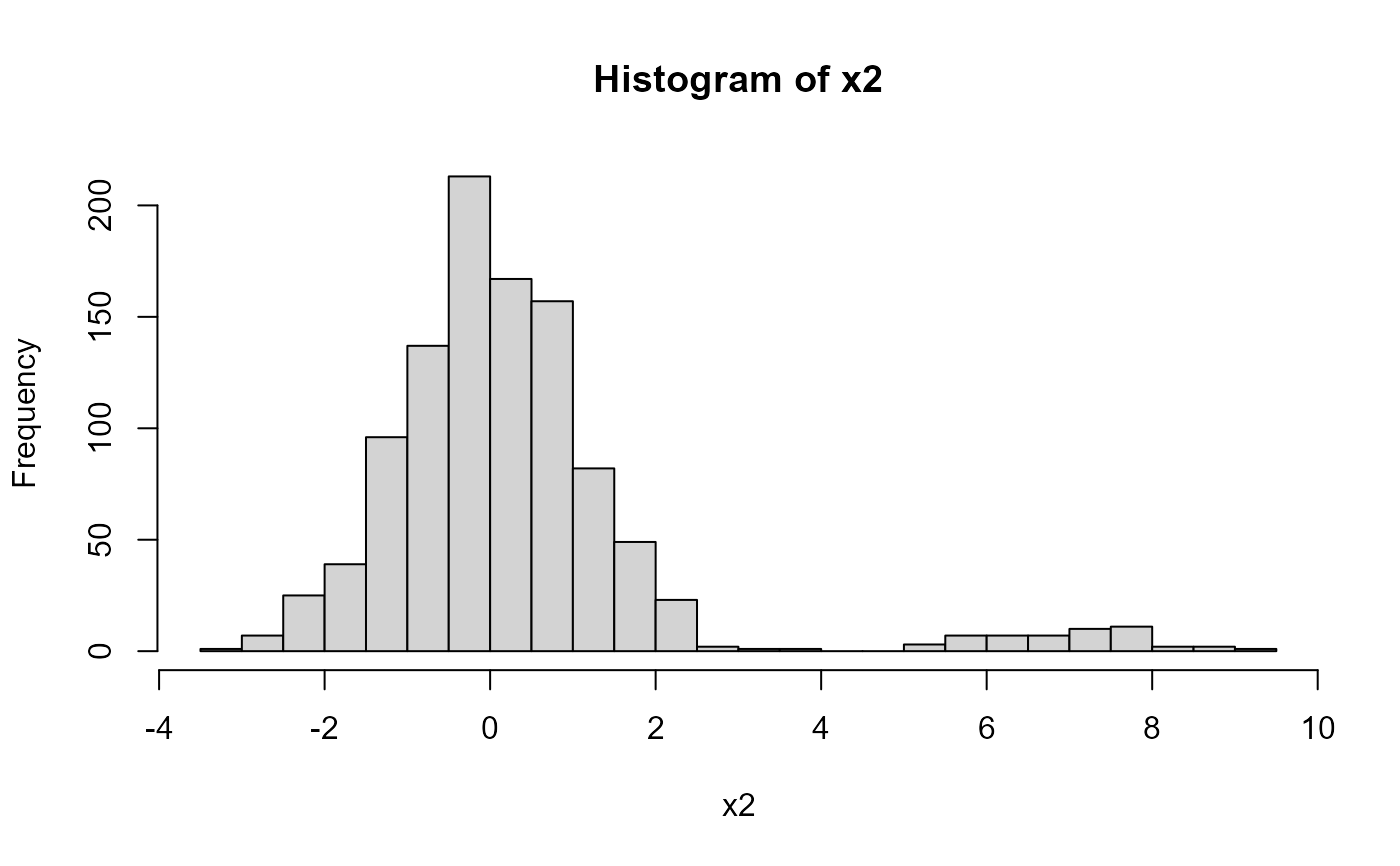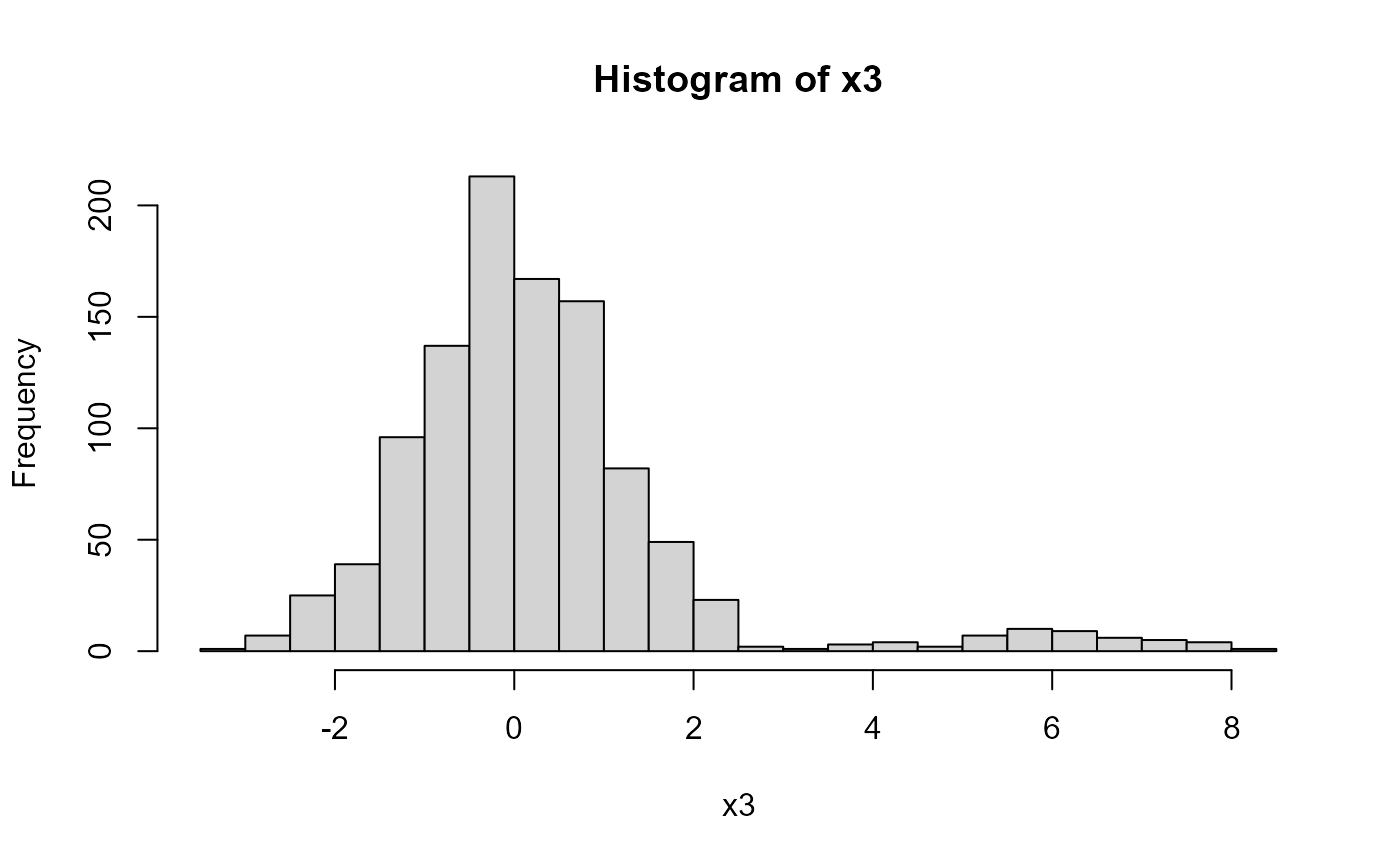Outlier detection based on departure from histogram. Suitable for compact values (need a space between main values and outliers).
hist_out(x, breaks = nclass.scottRob, pmax_out = 0.2, nboot = NULL)Arguments
- x
Numeric vector (with compact values).
- breaks
Same parameter as for
hist(). Default uses a robust version of Scott's rule. You can also use"FD"ornclass.FDfor a bit more bins.- pmax_out
Percentage at each side that can be considered outliers at each step. Default is
0.2.- nboot
Number of bootstrap replicates to estimate limits more robustly. Default is
NULL(no bootstrap, even if I would recommend to use it).
Value
A list with
x: the initial vector, whose outliers have been removed,lim: lower and upper limits for outlier removal,all_lim: all bootstrap replicates forlim(ifnbootnotNULL).
Examples
set.seed(1)
x <- rnorm(1000)
str(hist_out(x))
#> List of 2
#> $ x : num [1:1000] -0.626 0.184 -0.836 1.595 0.33 ...
#> $ lim: num [1:2] -Inf Inf
# Easy to separate
x2 <- c(x, rnorm(50, mean = 7))
hist(x2, breaks = nclass.scottRob)
 str(hist_out(x2))
#> List of 2
#> $ x : num [1:1000] -0.626 0.184 -0.836 1.595 0.33 ...
#> $ lim: num [1:2] -Inf 4.25
# More difficult to separate
x3 <- c(x, rnorm(50, mean = 6))
hist(x3, breaks = nclass.scottRob)
str(hist_out(x2))
#> List of 2
#> $ x : num [1:1000] -0.626 0.184 -0.836 1.595 0.33 ...
#> $ lim: num [1:2] -Inf 4.25
# More difficult to separate
x3 <- c(x, rnorm(50, mean = 6))
hist(x3, breaks = nclass.scottRob)
 str(hist_out(x3))
#> List of 2
#> $ x : num [1:1050] -0.626 0.184 -0.836 1.595 0.33 ...
#> $ lim: num [1:2] -Inf Inf
str(hist_out(x3, nboot = 999))
#> List of 3
#> $ x : num [1:1007] -0.626 0.184 -0.836 1.595 0.33 ...
#> $ lim : num [1:2] -Inf 4.75
#> $ all_lim: num [1:2, 1:999] -Inf 3.25 -Inf 3.25 -Inf ...
str(hist_out(x3))
#> List of 2
#> $ x : num [1:1050] -0.626 0.184 -0.836 1.595 0.33 ...
#> $ lim: num [1:2] -Inf Inf
str(hist_out(x3, nboot = 999))
#> List of 3
#> $ x : num [1:1007] -0.626 0.184 -0.836 1.595 0.33 ...
#> $ lim : num [1:2] -Inf 4.75
#> $ all_lim: num [1:2, 1:999] -Inf 3.25 -Inf 3.25 -Inf ...